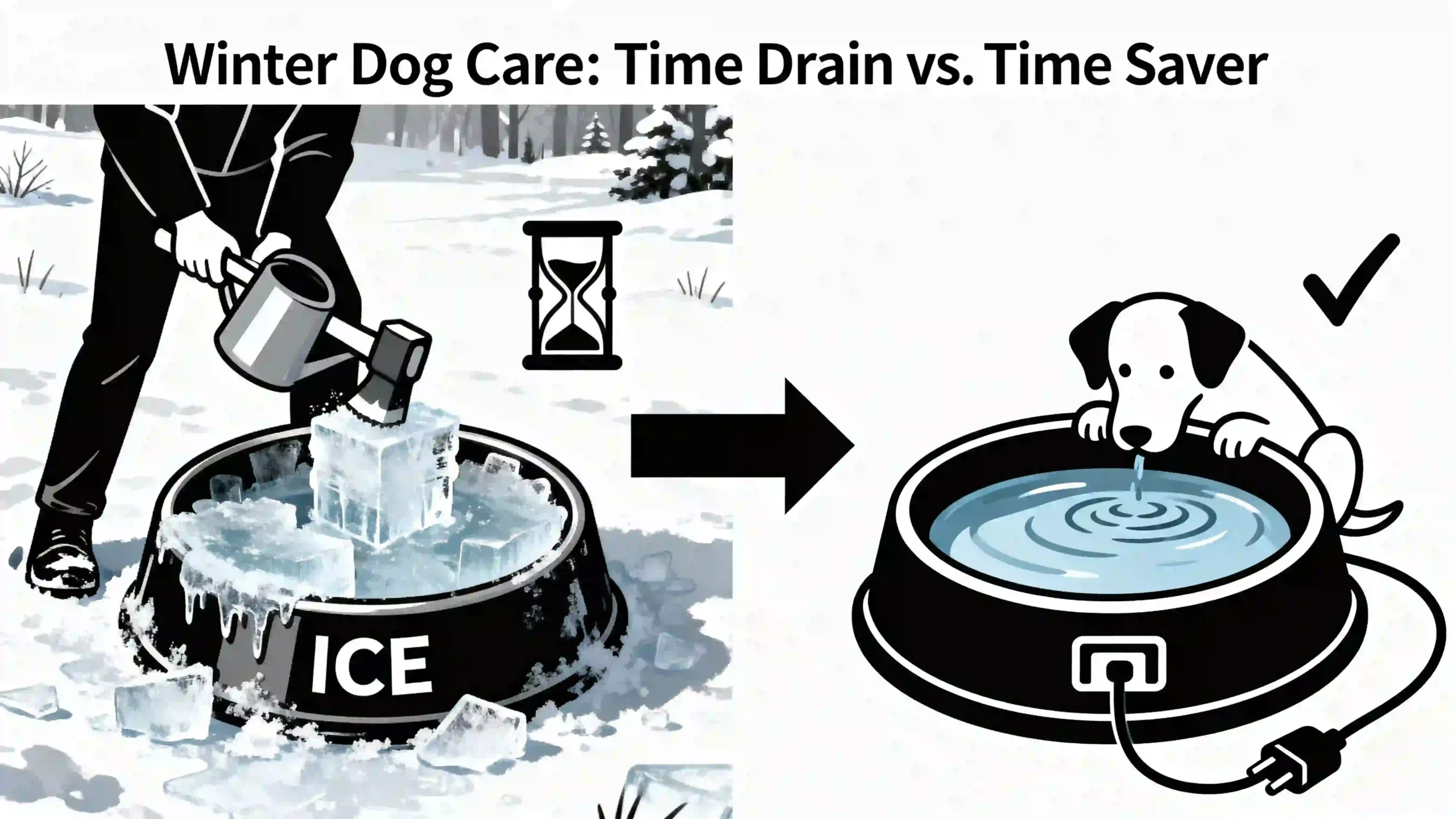You know those mornings when the thermometer reads well below freezing, and you trudge outside with a kettle just to break the ice in your dog’s water dish? A heated water dish for dogs promises to eliminate those hassles. But does it really save you time over the long winter? If you’re someone in the suburbs or rural areas with cold winters and large-breed dogs (Labs, Huskies, Shepherds…), here’s a confident look at when and how heated dishes deliver real convenience.
What “Saving Time” Actually Means
Before judging, you’ll want clarity on what “time savings” covers:
- Fewer trips outside: instead of hourly checks or ice-chipping, you visit less.
- Less water waste: when water stays liquid, you don’t drain, refill, or discard frozen or spoiled water.
- Lower maintenance: less scraping of ice, less cleaning from slush or snow, less reset of frozen cords or units.
These are the metrics by which you’ll assess whether a heated bowl is worth the upfront cost.
How Heated Water Dishes Prevent Winter Delays
Here’s how a properly designed heated water dish for dogs helps you avoid winter work:
- Automatic freeze prevention
A good heated bowl uses a thermostat or sensor. When temperatures drop near freezing, it kicks in, preventing solid ice. This saves you from having to manually break or chip ice every time you let the dog out. According to many product descriptions, heated thermal bowls can stay operational even when outside temps are −20 °C or lower. - Larger capacity means fewer refills
If the bowl holds enough water, it won’t freeze entirely overnight. Small bowls freeze faster, so you end up refilling multiple times a day in deep cold. A big dish means you do it once or twice instead. The reduction in trips to and fro saves real minutes each time. - Better materials = fewer breakdowns
Bowls built with durable materials (stainless steel, good insulation, strong cord protections) resist damage from ice, freezing expansions, or snow loads. When things break, you lose time fixing or replacing them. The more durable the heated dish, the more continuous your convenience. - Reduces snow/ice clean-up around the bowl
When water is frozen, snow piles up or melts and refreezes around the dish. You spend time shoveling out or de-icing the area so the dog can reach it safely. Heated water dishes implicitly reduce that chore because the base tends to stay wetter and warmer.
Real-World Time Savings: What Owners Report
From reading owner forums, blogs, and product reviews, here’s what people say:
- Many note that once the heated dish is installed, mornings are less stressful. No more “scrape the ice before breakfast” routine.
- Some say that in extremely cold weather, they still check, but instead of several times an hour, it drops to once or twice a day. Even during storms, access to liquid water means fewer urgent trips outside.
- One product description for a “thermal bowl” claims reduced ice build-ups and fewer frozen hours, meaning less manual intervention.
- For households with more than one dog, or dogs plus livestock, heated dishes mean less coordination needed for water refills, especially during early morning or late evening darkness.
When Heated Bowls Might Not Save Much Time
To be minimalist and realistic, there are conditions where a heated dish doesn’t save as much time:
- If the bowl is underpowered or poorly insulated. Then you still have ice or semi-frozen water, needing scraping.
- If the cord or heating element fails mid-winter, you spend time diagnosing or replacing parts.
- If the dish is too small for the dogs and outdoors conditions, so it freezes often regardless. Capacity matters.
- If you don’t have a good sheltered space: if the bowl is exposed to wind or heavy snow, heating takes much more effort, and you may still have to clean or protect it.
Tips to Maximize Time Saved
If you get a heated water dish for dogs, you can optimize it to really cut down on winter hassle:
- Choose a dish that stays liquid in your coldest expected temperature. Overspec a little so you have margin.
- Put it in a sheltered spot: under eaves, in a lean-to, or behind windbreaks. This reduces heat loss.
- Regularly clean the dish. Slush, leaves, ice chips slow heating or cause partial freezing.
- Use a durable, weatherproof cord and check connectors. If cord is swamped or exposed, it risks failure.
- Set up a backup (smaller unheated dish indoors or near the house) just in case power or heater fails.
Comparison with Other Winter Solutions
It helps to contrast heated water dishes with alternatives, to see where time savings are real:
- Manual ice breaking/refilling: high labor, frequent. Heated dishes win big except in rare failures.
- Buckets or stock-tank waterers: these hold more, but are often bulkier and require more wattage or sturdier infrastructure. They may save even more time if you have many dogs, but cost more and take more space.
- Heated bowls vs buckets trade-offs are discussed in Heated Dog Bowls vs Heated Buckets: Which Fits Your Lifestyle, which helps you weigh how much convenience you get vs setup effort and cost.
The Science Behind It
If you want confidence that this isn’t just anecdote, see The Science of Heated Dog Bowls: How They Prevent Ice Build-Up. Studies and product specs show that thermostat-driven heating, combined with good insulation, can keep water above freezing in very low temperatures, drastically reducing the need for manual intervention. That’s the physical basis for time saved.
Final Take: Is It Worth It for You?
You’ll likely save real, consistent time with a heated water dish, especially if:
- Winters are long and really cold.
- You have large-breed dogs that drink a lot.
- You dislike frequent outings to de-ice water in pre-dawn cold or late at night.
- You value the peace of mind more than the upfront cost.
If those apply, a moderately priced, durable heated dish with solid safety features becomes one of the better dog owner hacks you can invest in. It reduces friction in your winter routine, saves you early-morning trips, and helps ensure your dog stays hydrated without daily emergency chores.


